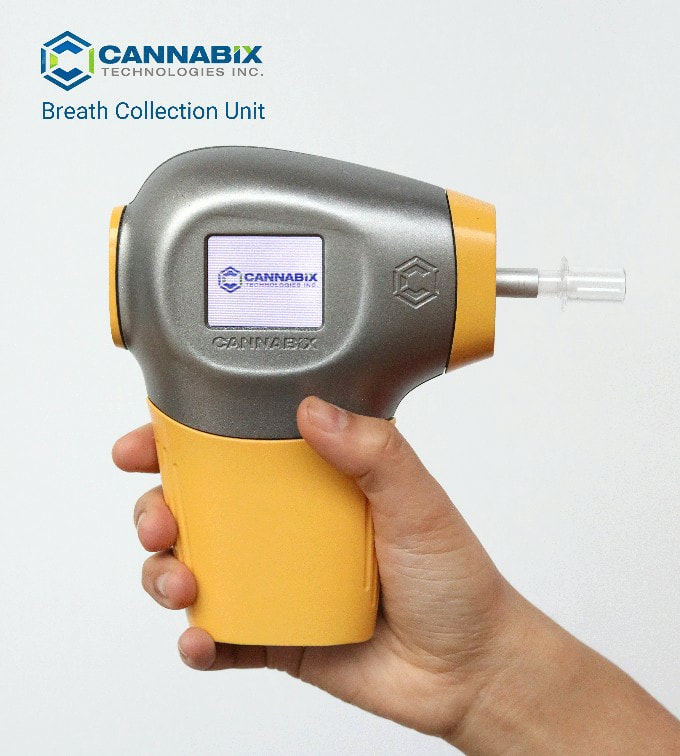News Releases
Cannabix Technologies Completes Breath Collection Unit and Provides Update
January 28, 2019
Vancouver, British Columbia, January 28, 2019 -- Cannabix Technologies Inc. (CSE: BLO) (OTC PINK: BLOZF) (the “Company or Cannabix”) developer of the Cannabix Marijuana Breathalyzer for law enforcement and the workplace, is pleased report that it has received an initial version of its portable handheld device that will provide for easy collection of breath samples at the point of care. In collaboration with Company scientists, MistyWest Engineering of Vancouver was engaged to develop a breath collection unit (“BCU”) in late November, that would interface directly with the innovative FAIMS (field asymmetric waveform ion mobility spectrometry) based instrument for the detection of THC in human breath that Cannabix is developing. The BCU is a proprietary device that will make it easier to collect key physiologic breath sample data under different environmental conditions to determine the effects of such parameters on a ∆9-tetrahydrocannabinol (“THC”) breath sample. BCU components were machined and assembled over the course of December and January and MistyWest has delivered an initial version of the BCU. Images of the Cannabix BCU can be seen at the Company’s website at cannabixtechnologies.com
Cannabix will use the new BCU for the collection of multiple samples, from multiple users under a variety of conditions, in an efficient manner. The BCU is lightweight, runs on a conventional battery and includes a self-contained specialized breath sample container that integrates directly with the Company’s FAIMS detection device for analysis. The BCU has been designed to collect numerous samples required for pilot and research testing and be easy to administer by untrained personnel.
The BCU real time data display wirelessly connects to an android device for live data streaming and this data can be sent to the cloud for further analysis and storage. Currently the BCU will collect key real-time parameters of breath flow rate, total volume, relative humidity measurements, as well as carbon dioxide levels, and temperature – these measurements and others, will help Cannabix, regulators and industry scientists determine key physiologic parameters needed for standardizing a breath sample for FAIMS THC content and its decay metrics. There is currently scant information related to these critical physiologic data points available for human breath in THC smokers.
Cannabix has been building upon its promising characterization results from 2018 and with additional FAIMS cells to improve resolving power and establish repeatable results in multiple devices. Thus far testing has demonstrated the ability to isolate Δ9-tetrahydrocannabinol (“THC”) and suppress background substrates substantially. FAIMS works as an “ion blocking” technology, essentially blocking unwanted ions/analytes and allowing specified ions to pass through for detection. The characterization work has been conducted using a bench version of the FAIMS device. Cannabix scientists have been actively tuning the FAIMS device coupled to real time switchable mass spectrometry to detect key molecules and their complex pathways in the body to enable the identification of recency of use.
Disclaimer:
The information in these press releases is historical in nature, has not been updated, and is current only to the date indicated in the particular press release. This information may no longer be accurate and therefore you should not rely on the information contained in these press releases. To the extent permitted by law, Cannabix Technologies Inc. and its employees, agents and consultants exclude all liability for any loss or damage arising from the use of, or reliance on, any such information, whether or not caused by any negligent act or omission.


